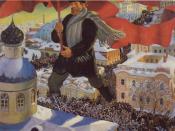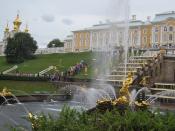One of the most revolutionary leaders of the United States of America, Abraham Lincoln, had once expressed his discontent towards the arrogant by stating, "I do not think much of a man who is not wiser today than he was yesterday." Since the dawn of civilization, the rise and fall of empires yielded vast similarities; yet few leaders took heed of their predecessors. The Russian Revolution was a time of unprecedented initial change, the disseverment of the Romanov dynasty and the fall of the age of monarchs. While at face value, the Nicholas II was replaced by a revolutionary man striving for reforms, such beliefs were all but quixotic. In essence, from the fall of Nicholas to the rise of Stalin, the leader solely put on the "robes of the tyrant it has disposed." The first of these despots was the arrogant Kerensky.
One of the main forces leading to the fall of Nicholas II was his ruthless war mentality.
Refusing to admit defeat he continued to pour men onto the front; many told to find there own rifles. In 1915 alone there were 2 million Russian casualties leading to a vast decline of civilian and soldier morale. Following Hobbes's conjectures, the success or failure of a nation lies in the hands of the populous. The constituents of Russia lost faith in the war effort and thus, the "mighty accelerator" led to the eventual coup. The provision government under the apt leadership of Kerensky refused to disrobe. He empirically defined the enemies against Russia: the Germans, Monarchs, and Bolsheviks. Reminiscent of Lincoln's Gettysburg Address in which he contended a "house divided cannot stand," Russia two had many internal divisions. While internal strife itself is a fundamental flaw in any nation, the outside war was the culminating force that again...


